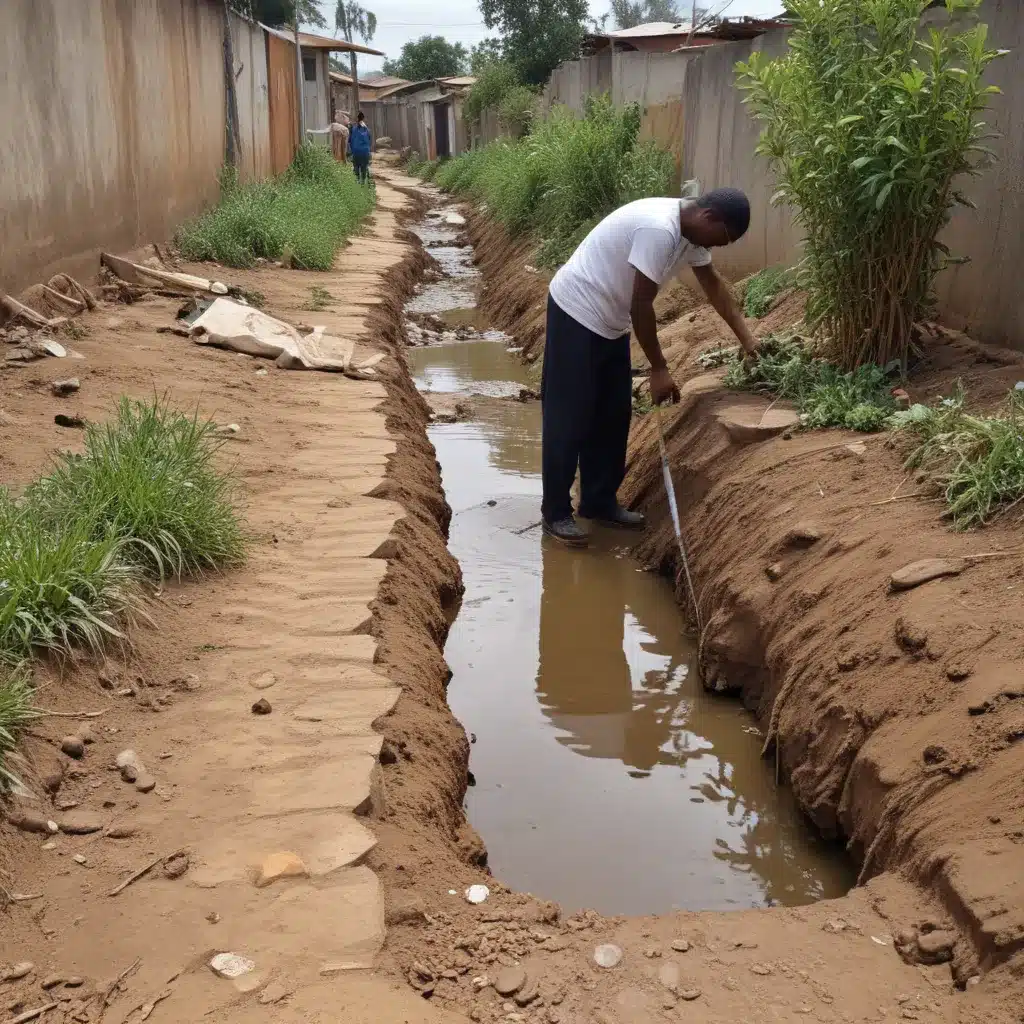
Informal settlements, often referred to as slums or shanty towns, pose unique challenges when it comes to effective flood control and water management. Residents in these densely populated areas typically lack access to basic infrastructure, including reliable storm drainage systems, sanitation facilities, and waste management services. As a result, they face heightened risks from flooding, waterborne illnesses, and environmental degradation.
Now, this might seem counterintuitive…
Assessing Flood Risks in Informal Settlements
Conducting a thorough flood risk assessment is the critical first step in addressing drainage issues in informal settlements. This involves mapping flood hazards, analyzing the vulnerability of the built environment and population, and modeling exposure to potential flood events.
Flood Hazard Mapping: Identifying areas prone to flooding is essential. This can be done through a combination of historical data, rainfall and runoff modeling, and on-the-ground surveys. Factors like proximity to waterways, low-lying topography, and inadequate drainage infrastructure should all be considered.
Vulnerability Analysis: Assessing the vulnerability of informal settlements requires understanding the physical characteristics of housing, access to essential services, and the socioeconomic status of residents. Homes constructed with substandard materials, lacking proper foundations, are at higher risk of damage or collapse during floods. Residents with limited financial resources also have fewer coping mechanisms.
Exposure Modeling: Estimating the potential impact of floods on informal settlements involves projecting the depth, duration, and velocity of floodwaters. This data can help prioritize interventions and inform emergency response planning.
Designing Effective Drainage Infrastructure
Addressing drainage challenges in informal settlements requires a multifaceted approach that combines both structural and non-structural flood control measures.
Levee Design: Constructing levees can provide essential flood protection, but their implementation in informal settlements is often complicated by land tenure issues and the need for community engagement.
Storm Water Drainage Systems: Engineered storm water drainage systems, including catch basins, underground pipes, and open channels, are crucial for channeling excess water away from vulnerable areas. However, these systems might want to be designed with the unique spatial constraints and maintenance challenges of informal settlements in mind.
Permeable Surfaces: Promoting the use of permeable paving, green infrastructure, and other nature-based solutions can enhance stormwater infiltration and reduce surface runoff. These approaches not only improve flood resilience but also offer environmental co-benefits.
Integrated Stormwater Management
Beyond traditional drainage infrastructure, successful flood control in informal settlements requires a holistic, integrated water resources management approach.
Green Infrastructure: Incorporating green infrastructure, such as rain gardens, bioswales, and constructed wetlands, can help mitigate urban flooding by slowing, storing, and filtering stormwater runoff. These nature-based solutions also provide recreational and ecological benefits.
Detention Basins: Strategically placed detention basins can temporarily hold and slowly release floodwaters, reducing peak flows and downstream impacts. These features can be integrated into community spaces, parks, or other public amenities.
Rainwater Harvesting: Promoting the use of rainwater harvesting systems at the household or community level can alleviate the burden on limited water supplies and reduce stormwater runoff. This approach can be particularly beneficial in areas with unreliable piped water networks.
Emergency Flood Response
Even with robust flood control measures in place, informal settlements might want to be prepared to respond effectively to flood events. This includes developing early warning systems, evacuation planning, and post-flood cleanup and recovery strategies.
Early Warning Systems: Implementing early warning systems that leverage real-time data from weather monitoring, rainfall sensors, and water level gauges can provide critical lead time for residents to take protective actions.
Evacuation Planning: Designing comprehensive evacuation plans for informal settlements requires understanding the unique challenges, such as narrow streets and limited access routes. Community engagement is essential to double-check that plans address the needs of all residents.
Post-Flood Cleanup and Recovery: Effective post-flood cleanup and recovery efforts can mitigate the long-term impacts of flooding, including the spread of waterborne diseases and damage to homes and infrastructure. This may involve debris removal, disinfection, and rehabilitation of critical services.
Addressing Social and Environmental Considerations
Successful flood control and water management in informal settlements cannot be achieved through technical solutions alone. Addressing the underlying social, economic, and environmental factors is crucial.
Community Participation: Engaging community stakeholders in the planning, design, and implementation of flood control measures is essential. This ensures that interventions are tailored to local needs and that residents have a sense of ownership and commitment to maintaining the systems.
Capacity Building: Investing in capacity-building programs to train community members in the operation and maintenance of drainage infrastructure can help double-check that long-term sustainability. This can include skills development in areas like storm drain cleaning, emergency response, and water conservation.
Adaptive Governance: Developing adaptive governance frameworks that foster collaboration between local authorities, community organizations, and other stakeholders can help navigate the complex challenges of informal settlements. This includes aligning policies, regulations, and funding mechanisms to support integrated water resources management.
Integrating Environmental Considerations
Flood control and water management strategies in informal settlements might want to also address environmental concerns to achieve long-term sustainability.
Ecosystem-based Approaches: Adopting ecosystem-based approaches, such as wetland restoration and urban greening, can enhance the natural capacity of the landscape to absorb and store floodwaters, while also providing co-benefits for biodiversity and ecosystem services.
Climate Change Adaptation: Incorporating climate change adaptation measures, such as designing infrastructure to withstand more frequent and intense rainfall events, can help informal settlements become more resilient to the impacts of a changing climate.
Disaster Risk Reduction: Integrating disaster risk reduction strategies into flood control and water management efforts can help minimize the impacts of flooding and other natural hazards on vulnerable populations in informal settlements.
By addressing the multifaceted challenges of drainage, sanitation, and environmental degradation in informal settlements, holistic and inclusive flood control strategies can help improve the lives and livelihoods of residents while fostering more sustainable and resilient communities.
Example: London Flood Resilience Initiative 2024















